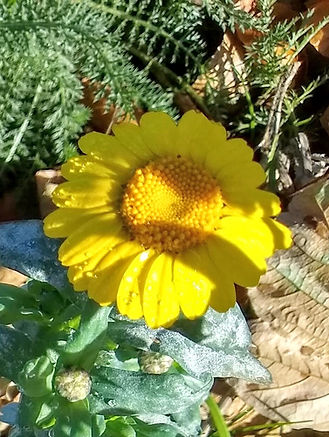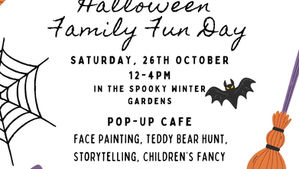

Wildlife & the Water of Leith
Reasons to visit Saughton Park are numerous, but did you know that a variety of wildlife like to visit and call the park home and several species of trees and other greenery can be found?
Otters
We have some otters! You may see them diving under the water to fish and have been seen mostly where the Water of Leith runs alongside Gorgie Road to the south of the park. Otters have brown fur, a long slim body with small ears and webbed feet which help them swim. They swim low in the water so are often hard to spot, look out for large rings appearing on the surface of the water, as that may be them disturbing the water as they dive down for fish to eat.
Fishing can be hard work, so the otters have what are called resting up sites and these have been noted along the north and south bank of the river.
Birds
Several species of bird nest in the park and visit to forage for food. Look out for our magnificent Kingfisher with its long sharp beak flying low and fast over the river as it looks for fish and our regular visitor, the Grey Heron, often spotted at the weir at Fords Road. With its long legs and beak and its mixture of grey, black and white feathering it’s hard to miss!
Listen carefully and you might hear the rat-tat-tat of the woodpecker drumming on a nearby tree. Importantly, species such as the house sparrow have been seen. Although often spotted these birds have suffered an estimated 71 per cent drop in population since 1971, similar to many other species. Their conservation is of the highest priority and the Friends of Saughton Park will be working to help house sparrows and all bird species find food and nesting spots within the park.
Please see the list below for other birds spotted in the park.

Latest Events
Location


• Common gull
• Dipper
• Dunnock
• Goosander
• Great spotted woodpecker
• Great tit
• Grey heron
• Blackbird
• Black – headed gull
• Blue tit
• Carrion Crow
• Chaffinch
• Collared dove
• Oyster catcher
• Robin
• Starling
• Woodpigeon
• Wren

• Herring gull
• House sparrow
• Jackdaw
• Kingfisher
• Long - tailed tit
• Magpie
• Mallard
• Moorhen
Bats
The park offers ideal foraging habitat for bats with a mix of water, woodland and open areas. Pipistrelles bats have been seen foraging for food along the trees that line the Water of Leith at the south and south east edge of the park.
Recent surveys of buildings and trees in the park have not seen any sign of bats roosting, but the Friends wildlife group are working to make the park a more welcoming place for our bats so that they can call it home too. The Friends would like to see more bats in the park with a wider selection of the 18 species of bat found in the UK encouraged to feed and roost here. Find out here why bats are so important and why we need to help them.
All bats like to eat night flying insects (one pipistrelle can eat up to 3000 insects a night!) so you are more likely to see them at sunrise or sunset when they come out to feed, especially in the summer months.
Butterflies
A number of butterfly species have been seen including red admiral, small tortoiseshell, peacock, whites, small copper and a comma butterfly. Red admirals are hard to mistake with broad red strips and white spots on its mainly black wings. They can be spotted throughout the year from January to December. The peacock butterfly is rarer in Scotland than in the rest of the UK, you can identify it by the single peacock feather like spot on each of its wings.
Butterflies need our help to survive and the Friends are helping make sure the park attracts even more with actions such as the planting of butterfly friendly flowers. Click here are some ways you can attract them to your garden and here for some butterfly facts.
These are just some of the species you can see at the park. Next time you visit Saughton Park, why don’t you explore a little more and see what you can find. The RSPB have some great Spot It! guides you can download and print here to tick off all the species of animals, birds and insects you might see.
Remember not to disturb any animals, insects, birds or their homes while you explore!


Water of Leith
The Water of Leith forms a boundary entering to the west of the park and flowing around the south and south east. Saughton Park is a destination on the Water of Leith walkway which runs from Balerno to Leith and a great place to stop for a wee rest! The name of the park and the former Saughton Hall mansion house comes in part from the proximity of the estate to the river with Sauch meaning willow and Haugh meaning level or low - lying land next to a river.
Once playing an essential industrial role for Edinburgh, the river and the corridor of trees, shrubbery and flowers offer a great semi-natural habitat for wildlife and greenery and the river banks are now designated an Urban Wildlife Site. The Water of Leith viewing platform situated in the park next to the north bank is a great place to enjoy the river as it meanders its way through on its way to the Firth of Forth at Leith.
The Friends raised more than £2,500 to create the stone carving situated at the viewpoint which illustrates the river winding through the city. Click here for more information on the walkway, the history and wildlife of the river.
Woodland, Shrubbery and Plants
There are various species of trees, shrubs, flowers and plants present in the park and along the Water of Leith boundary, the lists below are not exhaustive, but illustrate some of the variety to be seen on your visit!
Along the Water of Leith ash, beech, cherry-gean, goat willow, grey poplar, horse chestnut, Norway maple, elm, silver birch, small-leaved lime, sycamore acer and wych elm trees are present. The understory includes bluebell, cow parsley, red campion, sweet cicely, tuberous comfrey and wood avens among other species.
In the park itself there are also elders, flowering cherry, larch, oaks, wild cherry, willow, scots pine, sycamore, Swedish whitebeam and yew. The herb layers present cleavers, cocksfoot, marsh foxtail, red clover and willowherbs.
Some of the grass species in the park are Yorkshire fog, common sorrel, creeping buttercup, dandelion, oxeye daisy and yarrow. Plant species include red fescue, coltsfoot, leopards bane, hawkweed and white clover.

A new wildflower meadow will be sown soon in the south of Saughton Park to provide a wonderful habitat for the insects, bees and butterflies that visit as well as a lovely place to sit and watch the world go by!
Click here for help identifying different kinds of trees and here for help identifying wildflowers.
New orchards are being planted by the Friends, you can find out a little more here.




